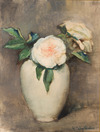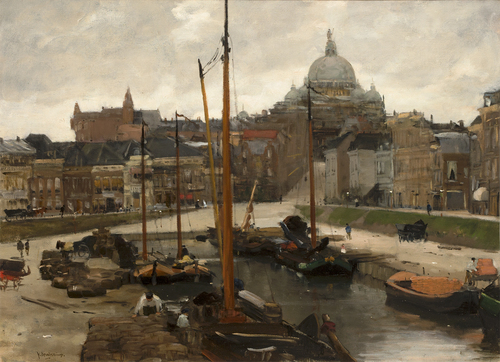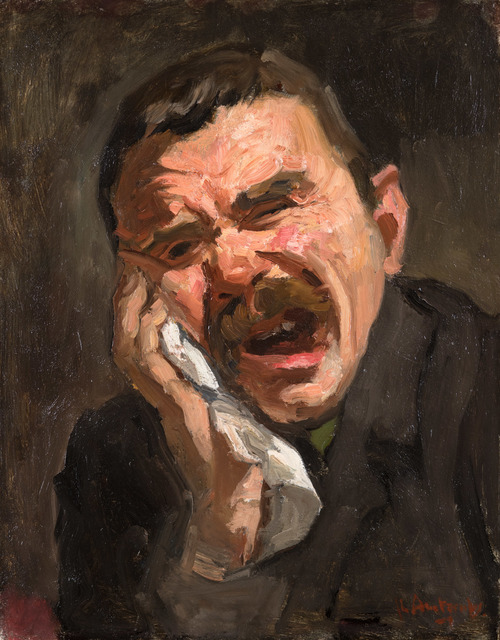P.F.N.J. (FLORIS) ARNTZENIUS 1864 Surabaya (Indonesia) - 1925 The Hague Flowers in a Vase
Watercolor / Paper: 31,5 x 24 cm
- This artwork can be viewed in our gallery
- Call us for more information: +31 26 361 1876
- World wide shipping available
Width: 24 cm
Over P.F.N.J. (FLORIS) ARNTZENIUS
Den Haag Born on Java (Dutch East Indies), Floris Arntzenius came to the Netherlands with his family as a young boy. He received his formal artistic education at the Rijksacademie in Amsterdam. After the death of his father in 1892, he and his mother settled in The Hague, never to leave this city. He is considered a representative of the younger generation of the Hague School. In fact, Arntzenius’ work must be placed between the Hague School and the even freer impressionism of the Amsterdam School. Influenced by his contemporary George Breitner (1857-1923) Arntzenius preferred choice of subject matter, city-life with crowded streets, was at odds with the Hague School, which focused mainly on land- and seascapes around The Hague. His intimate darker colours, though, combined with strong contrasts between light and dark, belonged to the Hague School tradition. Another favoured subject, the beach scenes at Scheveningen, are of a lighter version, rendered in strong brushstrokes and evoke a calm serenity. Unlike his Amsterdam colleagues, Isaac Israels and George Brietner, Arntzenius was not allowed by the city council of The Hague to paint out-doors and was forced to “rent a window” for access to his many street views. Floris Arntzenius embraced the artistic scene of The Hague by becoming a prominent member of various artists societies and leading an extensive social life surrounded by fellow artists. He married a painter of floral still-lives, Lide Doorman, and together they had four daughters. Arntzenius was an accomplished artist in several mediums, but especially his watercolours gained high praise. From 1910 onwards, having a double studio, he took on pupils and worked mostly on commission until his death by tuberculosis in 1925. Floris Arntzenius was a successful painter throughout his life. He knew of the modernistic trends of his day but chose his own path moving away from the Hague School by embracing a more modern attitude to life.









